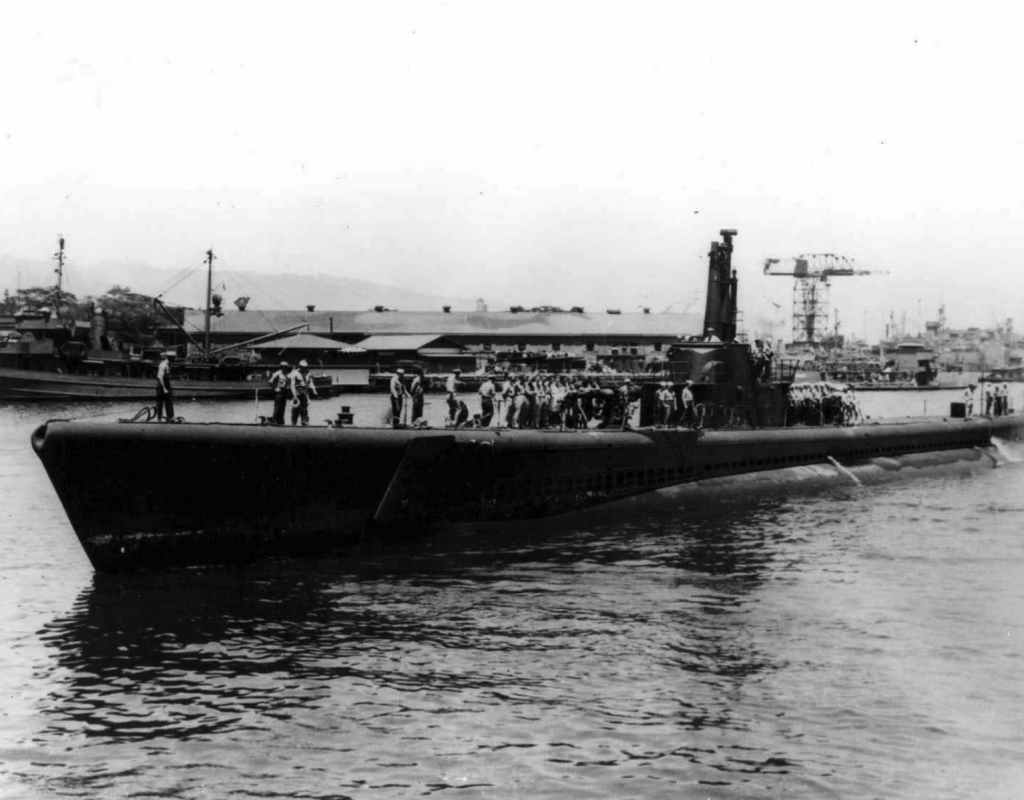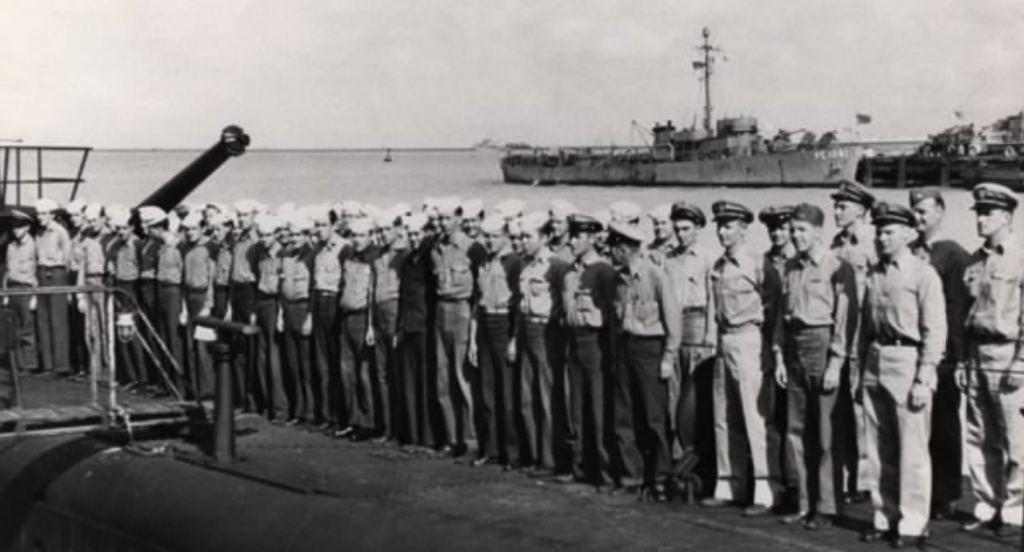Escaping a Sunken Sub: The Dramatic Story of the USS Tang
April 13, 2022 by Jenny Ashcraft |. May thanks to FOLD3 for the article
On October 24, 1944, the USS Tang (SS-306) sank off the coast of China during WWII, trapping 29 sailors in 180 feet of water. The Balao-class submarine was destroyed when her own torpedo boomeranged back and slammed into the ship’s port side during an attack on a Japanese convoy. Out of the 87 men aboard, just nine survived.
The USS Tang launched in August 1943. During her 14-month career, she sank 33 ships with an aggregate total of 227,793 tons. She rescued 22 Naval aviators, received two Presidential Unit Citations, and conducted five highly successful war patrols. During her fifth and final patrol, Tang’s distinguished service came to an end.
Early in the evening of October 24, 1944, while on patrol in the Taiwan Strait, the USS Tang made radar contact with an enemy convoy of large ships. The convoy hugged the China coast between Foochow (Fuzhou) and Amoy (Xiamen). The Tang shadowed the convoy as the Japanese ships fired randomly in their direction. Meanwhile, since it was dark, Commanding Officer Richard H. O’Kane decided to attack from the surface. The Tang sank two freighters, and a tanker, and damaged a transport. When the Tang launched the final torpedo, it began to arc and circle back towards the sub.
O’Kane desperately tried to maneuver the Tang out of harm’s way, but the ship moved too slow. The torpedo slammed into the sub, causing a violent explosion that sent crew members smashing into bulkheads. Almost half the sailors died instantly. O’Kane and several crew members were blown off the bridge by the explosion and tossed into the water, where they clawed their way to the surface. As water flooded three compartments, the Tang began to sink.
Personnel in the control room succeeded in closing the conning tower hatch, but it had been damaged in the explosion. A quick-thinking sailor levelled. MyMy the sinking sub by flooding two ballast tanks. The Tang sank 180 feet and settled on the ocean floor. Many of the survivors were injured, so the able-bodied carried them to the forward torpedo room where the escape trunk was located. Twenty-nine men were now in an escape position, but some were too injured to try. On the surface, the Japanese patrols dropped depth charges, making it almost impossible for the rest to attempt an escape. As they waited, the crew destroyed sensitive and confidential documents. A growing electrical fire in the forward battery of the sub sent smoke seeping into the torpedo room, creating a sense of urgency.
With time running out to attempt an improbable escape, the first four men entered the escape trunk. They let it fill with water to equalize the pressure and opened the outside hatch. They used Momsen Lungs, a device that recycles exhaled air allowing an escapee to breathe, to ascend from the depths. Eventually, thirteen men escaped the sub, but only eight made it to the surface. Of those eight, five managed to swim until they were rescued. Meanwhile down below, the pressure was building outside the torpedo room door. Suddenly, the gasket failed and the door blew open. All the remaining sailors were asphyxiated.
The nine survivors, including Commander O’Kane, were plucked from the water and taken to Japanese POW camps, where they languished until the war ended. Following the war, O’Kane was awarded the Medal of Honor. If you would like to learn more about the USS Tang, search Fold3® today. Also, our friends at Stories Behind the Stars have written profiles for each of the sailors who died aboard the Tang. See those profiles here.



